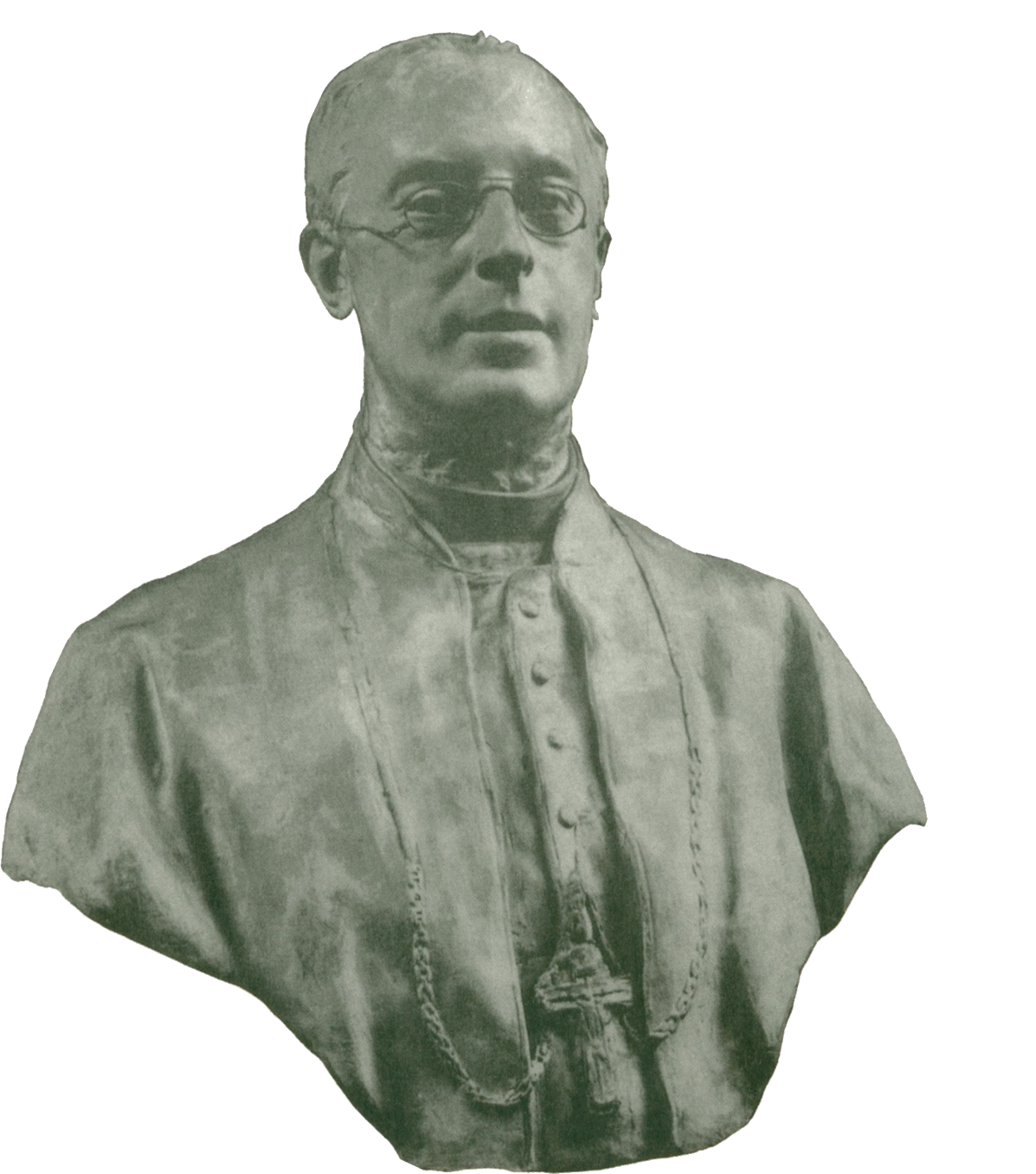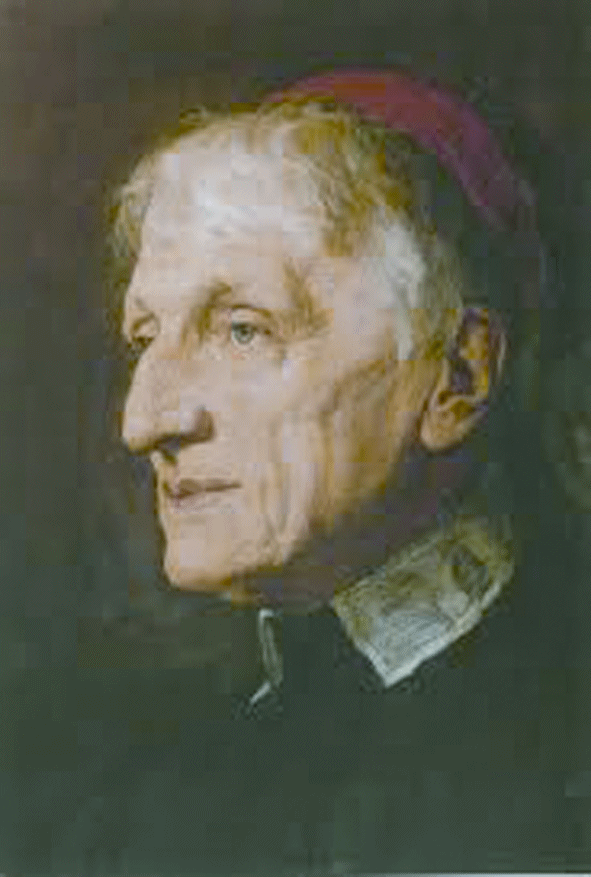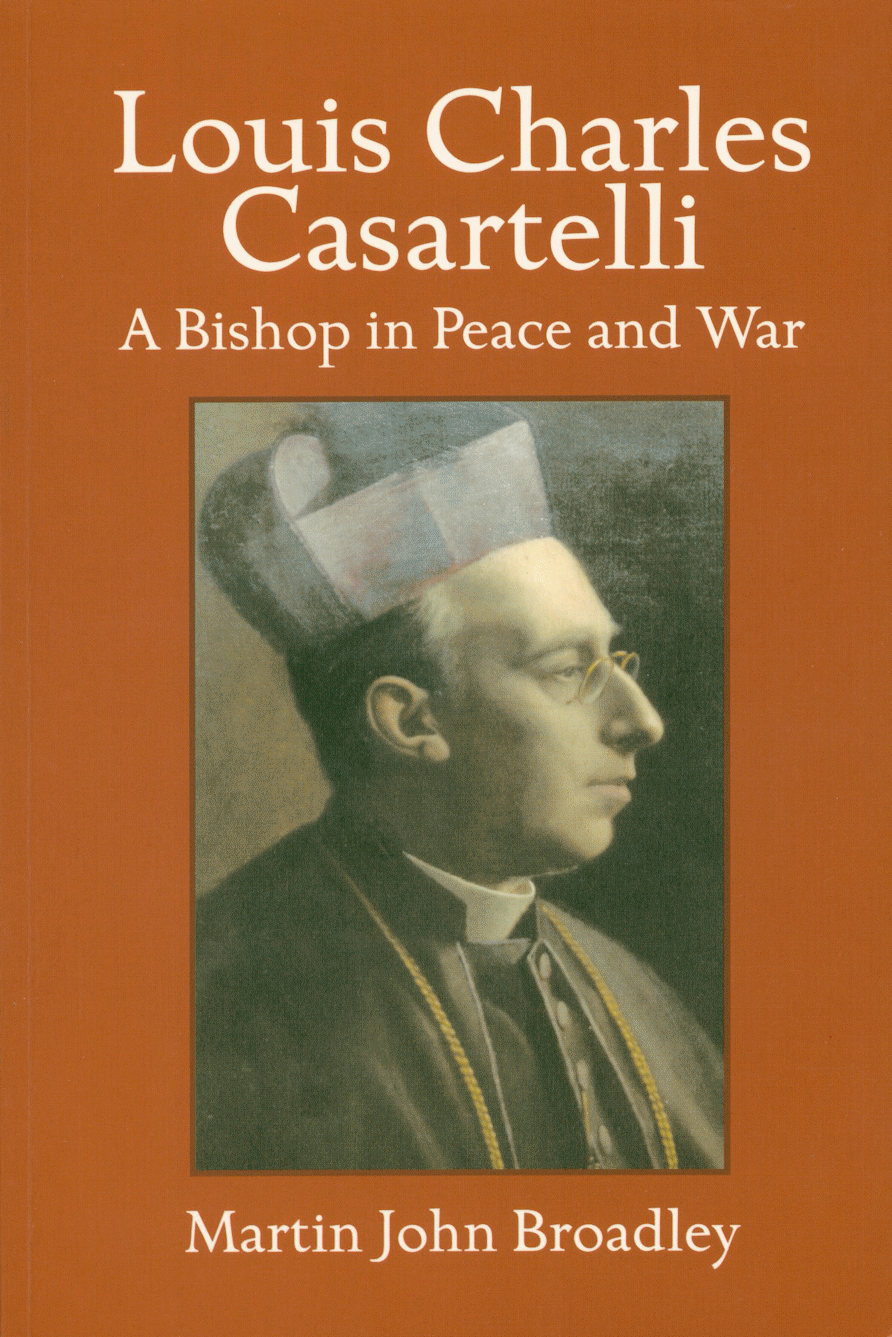|
 When Louis Charles Casartelli heard of rumours connecting him to the vacant See of Salford in early 1903, he wrote immediately to Cardinal Herbert Vaughan pointing out that he was totally unfit for a bishopric in modern England. Not alone that, he made a special journey to Rome and appealed in person that his name should not be mentioned for Salford. It was all in vain and he became the fourth Bishop of Salford the same year. He accepted the position as the will of God; his episcopal motto was succinct: fiat voluntas tua. When Louis Charles Casartelli heard of rumours connecting him to the vacant See of Salford in early 1903, he wrote immediately to Cardinal Herbert Vaughan pointing out that he was totally unfit for a bishopric in modern England. Not alone that, he made a special journey to Rome and appealed in person that his name should not be mentioned for Salford. It was all in vain and he became the fourth Bishop of Salford the same year. He accepted the position as the will of God; his episcopal motto was succinct: fiat voluntas tua.
His unease was understandable as he was an outstanding linguist; he had read or written in 24 languages. He was a scholar with a vast range of interests. He had published books and articles on subjects as extraordinarily diverse as “Hindu Mythology and Literature”, Marriage and Funeral Customs of Ancient Persia, Early Zoroastrianism, The Catholic Church in Japan, Commercial Geography, poems, CTS Pamphlets and numerous newspaper articles and reviews. Though he had spent 10 years as rector of St. Bede’s College, he felt unprepared and unfit for the position as until then his “life had been dedicated exclusively to study and teaching the young without any experience of administration or business”
However, Cardinal Vaughan saw the need for someone of his intellectual ability and vision at a high level in the Church in England. Casartelli had been the one, who took on a major role in the 1870’s of rebutting the anti-Catholic rhetoric of the press and particularly the pamphlet by Gladstone attacking The Syllabus of Errors and the Decrees of the First Vatican Council. In spite of ill-health, Casartelli’s period as Bishop until his death in 1925 (at the age of 73) saw enormous progress in the diocese. Lenten returns show confessions up by over 50%; there were 90 additional priests, 24 new parishes, 14 secondary and central schools and 7 new religious communities.
Bishop Casartelli’s understanding of the lay apostolate followed the Catholic Action Action model of Pius X -’the organised participation of the laity in the hierarchical apostolate of the Church’. He saw the Catenian Association as part of this vision and met with our founders in Manchester and his episcopal patronage and support provided considerable encouragement to the fledgling Association. He wrote to other clergy expressing the hope that they would do their best for the Catenians.
Casartelli was the eldest of 6 children born to quite a wealthy Italian family living in Clarence St., Cheetham Hill, an affluent area of Manchester at that time. His father was described as an ‘ optician, and a philosophical instrument and hydrometer maker’. He supplied instruments all over the world from the works at Clarence St. and the showrooms in Market St. In a period of significant anti-catholic feeling, he was prominent in the Manchester business community; the famous physicist, James Joule, was a friend.
Bishop Turner established the the Salford Catholic Grammar School behind his house on the Crescent in Salford in 1862 and young Casartelli was the second pupil to sign the roll. He proved a brilliant pupil and on deciding to go for the priesthood, he continued his education at Ushaw College. Though being an admirer of John Henry Newman (Beatified in 2010) was regarded as being a bit suspect there, Casartelli became and ardent Newnmanite and, in a letter to Newman (right) shortly after they first met in 1875, he acknowledges his considerable admiration for Newman. In a lecture in 1919, 40+ years later, he confirmed the major influence of Newman throughout his life.
Casartelli left Ushaw in 1872 to study at Louvain and was ordained in Salford Cathedral in 1876. After further studies at Louvain, he was appointed to St Bede’s College.

This gives only the briefest look at his life and we thoroughly recommend the biography by Martin Broadley published by Koinonia Books and entitled Louis Charles Casartelli - a Bishop in Peace and War. Besides being an eminently readable biography of the man it also gives a fascinating insight into the upheavals and struggles both in the Catholic community and in society in the latter part of the 19th and early 20th centuries.
Koinonia Books (Peter Purdue of Bury Circle & President of Manchester Nr.1) can be contacted at 70 Sandown Road, Bury, Lancashire BL9 8HW. Peter delivered an intriguing paper entitled “St Louis Charles Casartelli?” at the Annual Casartelli memorial Dinner in February 2011. It has been published in the July issue of Catena. Click here to view the magazine; the article is on Page 41 or Click here to download the text in Word Format.
Bishop Casartelli laid the Foundation Stone for many new Churches during his time as Bishop and while it started out as question of general interest, we are now keen to identify others besides the 2 we are aware of at present.
St. Johns, Rochdale.
St. Peters, Middleton.
|